The Manor, Mill Lane
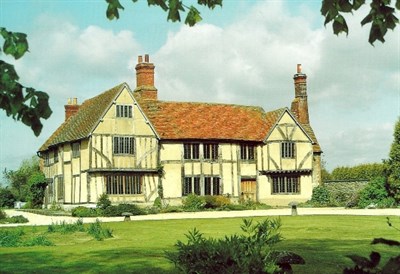 The timber framed hall house, listed Grade 1, dates from c.1450. It occupies the site of an earlier building, probably that of the Bereford 'court within a moat' of the 1336 survey, believed to have been the same for which John de Plessis had received gifts of oaks for building from Henry III in c.1240.
The timber framed hall house, listed Grade 1, dates from c.1450. It occupies the site of an earlier building, probably that of the Bereford 'court within a moat' of the 1336 survey, believed to have been the same for which John de Plessis had received gifts of oaks for building from Henry III in c.1240.
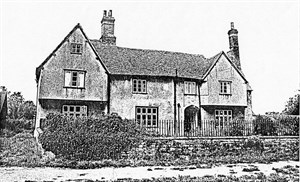 Although many modifications have been made in the period of more than five hundred years, most of the early construction remains.
Although many modifications have been made in the period of more than five hundred years, most of the early construction remains.
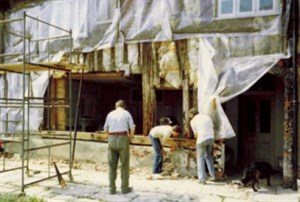 In 1979 the discovery of some late C17 wall paintings behind inserted walls led to the removal of external rendering from the front and south side of the house, thus exposing the timber frame. During the replacement of two main timbers further discoveries initiated the removal of other predominantly late C19 and early C20 adaptations that led to yet more revelations.
In 1979 the discovery of some late C17 wall paintings behind inserted walls led to the removal of external rendering from the front and south side of the house, thus exposing the timber frame. During the replacement of two main timbers further discoveries initiated the removal of other predominantly late C19 and early C20 adaptations that led to yet more revelations.
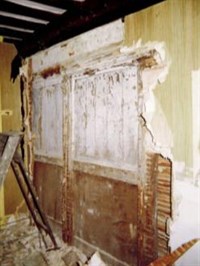 Over the following years other manifestations have added to the numerous visible, historic features, and much knowledge has been gained.
Over the following years other manifestations have added to the numerous visible, historic features, and much knowledge has been gained.
The house is used annually by English Heritage, now Historic England, for the practical day of the University of Oxford Building Survey Week for mature students, and for the practical day of a few other courses, mainly at the University of Reading.
It is a family home and is occasionally open to the public. Conducted tours can be arranged by written application only, to Mrs Rachel Jacques, The Manor, Chalgrove, OXFORD, OX44 7SL. 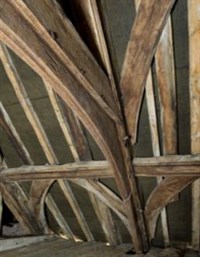 The normal rate is £13 per head but there is a minimum charge of £90, and groups are limited to 12 in number (24 in two groups).* Tours normally take approximately 2 hours.
The normal rate is £13 per head but there is a minimum charge of £90, and groups are limited to 12 in number (24 in two groups).* Tours normally take approximately 2 hours.
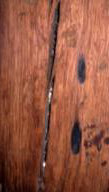 Access to the first floor is by stairs with handrails on both sides, to the second floor by a narrow, winding staircase with a handrail on the left, and then to the roof of the hall by way of a short crawl past the inserted chimney.
Access to the first floor is by stairs with handrails on both sides, to the second floor by a narrow, winding staircase with a handrail on the left, and then to the roof of the hall by way of a short crawl past the inserted chimney.
* If your visiting group is much larger than twelve in number, perhaps you would like to consider dividing into two with one half visiting Chalgrove Church (which, among very many historic features, has an almost complete set of medieval wall paintings about which a presentation can be arranged), interchanging possibly after lunch - perhaps at The Red Lion, owned by the church.